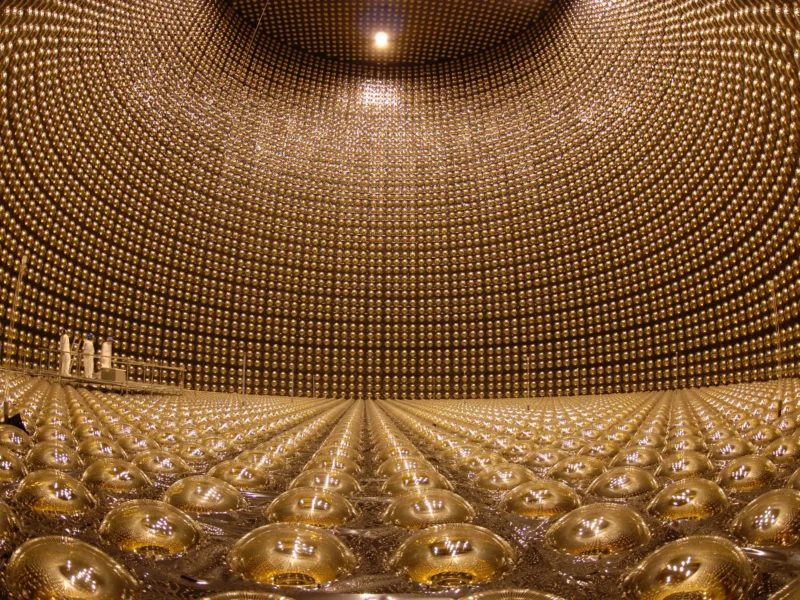
Enlarge / The Super-Kamiokande neutrino detector at the Kamioka Observatory in Japan. (credit: Kamioka Observatory, ICRR (Institute for Cosmic Ray Research), the University of Tokyo )
Somehow, neutrinos went from just another random particle to becoming tiny monsters that require multi-billion-dollar facilities to understand. And there’s just enough mystery surrounding them that we feel compelled to build those facilities since neutrinos might just tear apart the entire particle physics community at the seams.
It started out innocently enough. Nobody asked for or predicted the existence of neutrinos, but there they were in our early particle experiments. Occasionally, heavy atomic nuclei spontaneously—and for no good reason—transform themselves, with either a neutron converting into a proton or vice-versa. As a result of this process, known as beta decay, the nucleus also emits an electron or its antimatter partner, the positron.
There was just one small problem: Nothing added up. The electrons never came out of the nucleus with the same energy; it was a little different every time. Some physicists argued that our conceptions of the conservation of energy only held on average, but that didn’t feel so good to say out loud, so others argued that perhaps there was another, hidden particle participating in the transformations. Something, they argued, had to sap energy away from the electron in a random way to explain this.




















+ There are no comments
Add yours